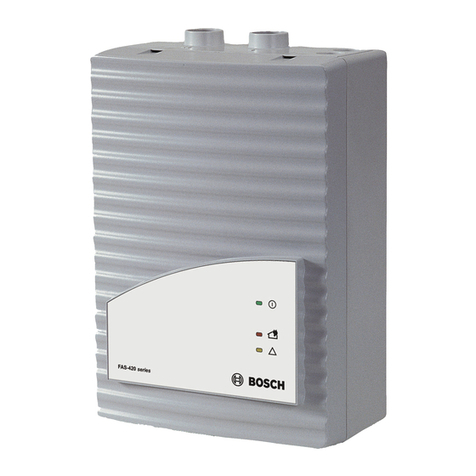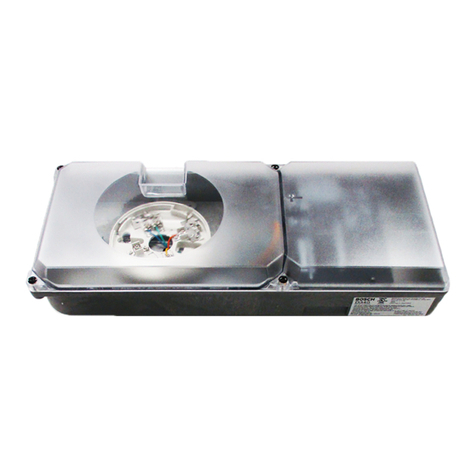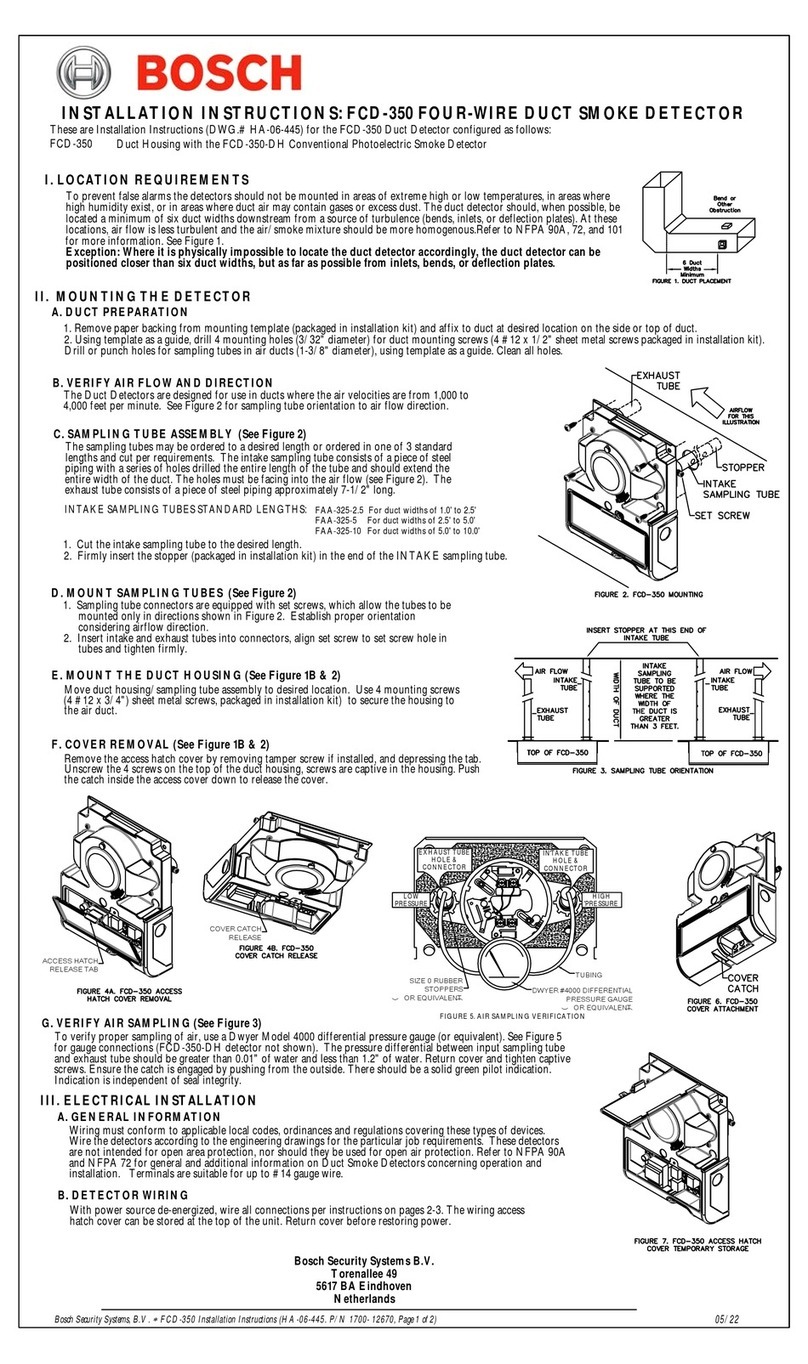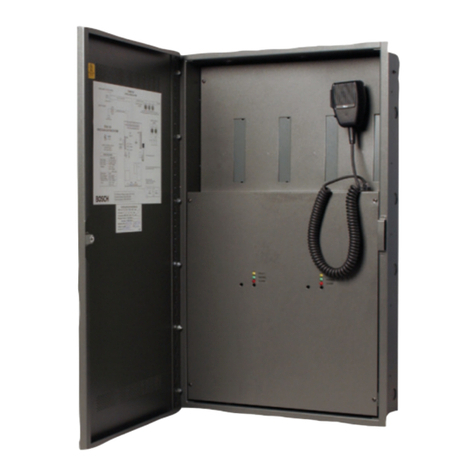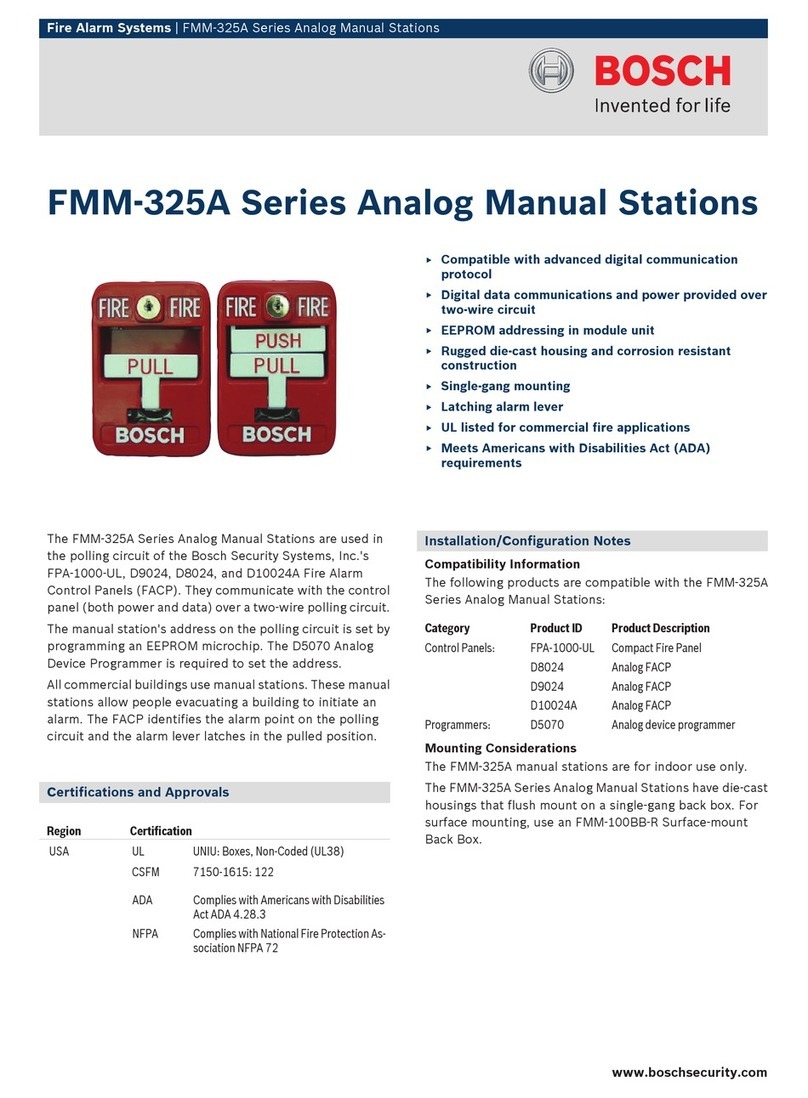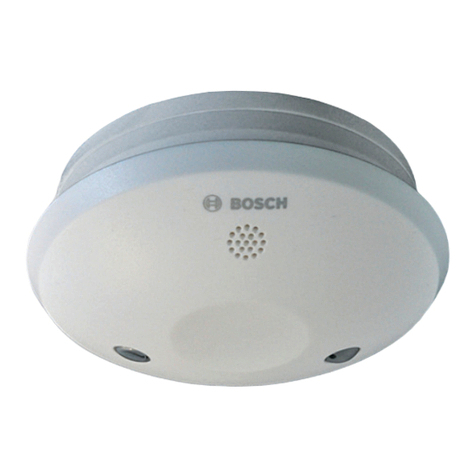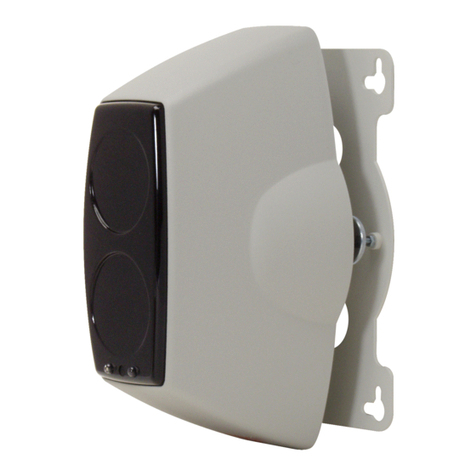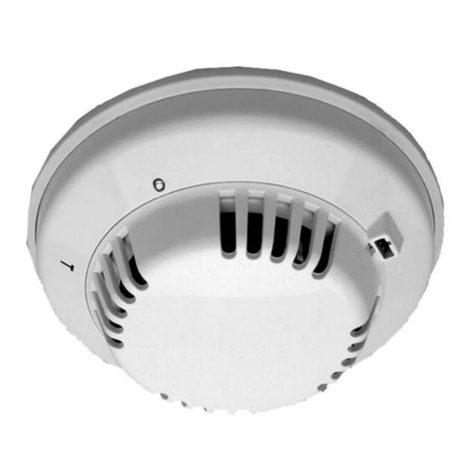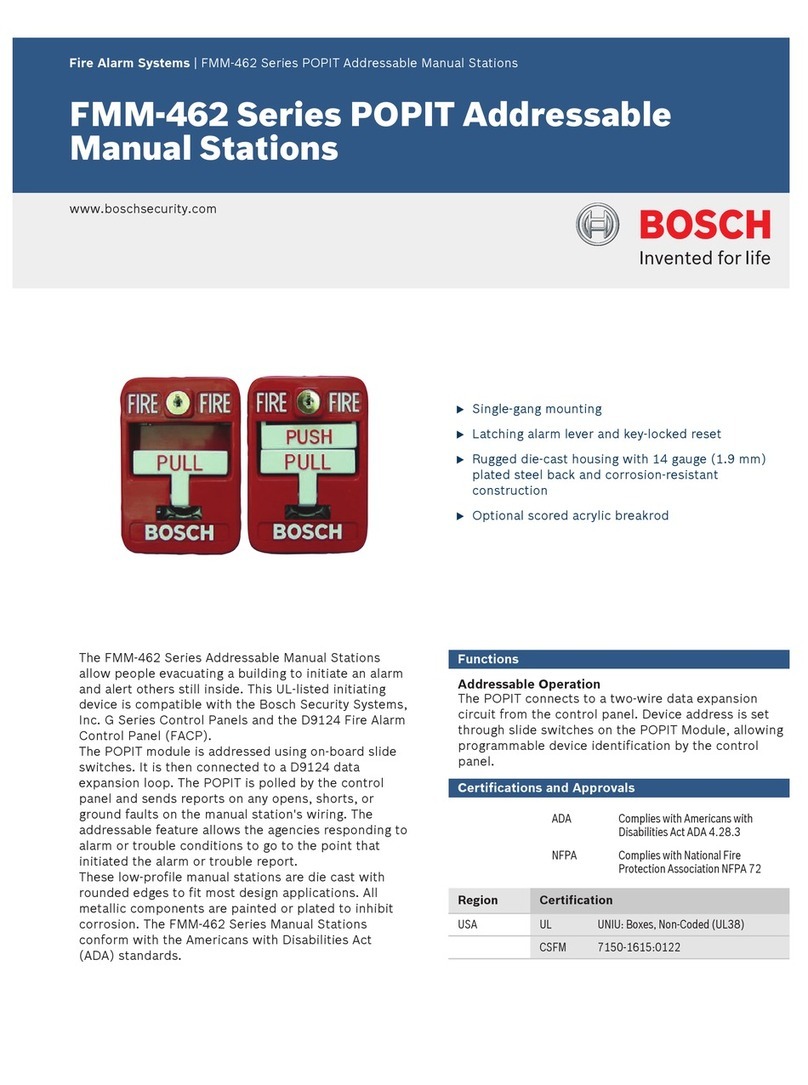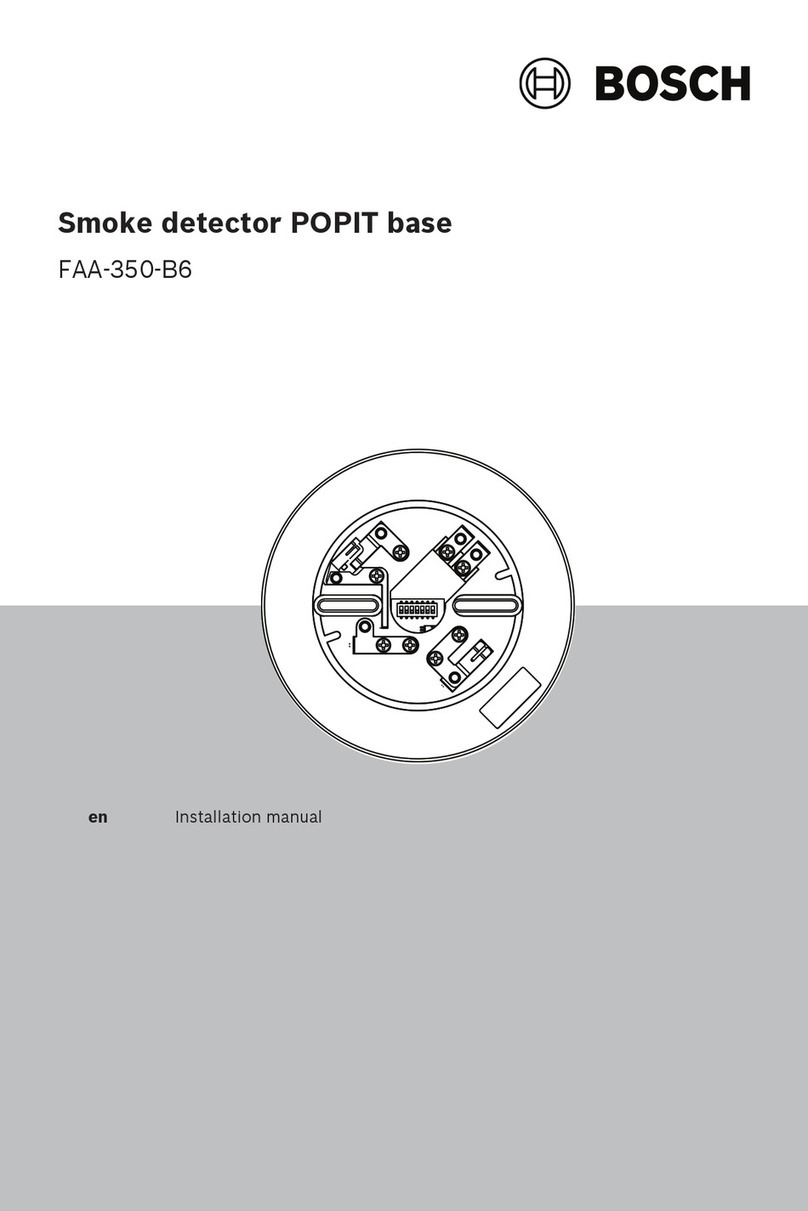8en | Technical Specifications FAS-420-TM Aspirating Smoke Detector
F.01U.088.878 | 4.1 | 2010.11 Operation Guide Bosch Sicherheitssysteme GmbH
2 Technical Specifications
2.1 Product Description
Aspirating Smoke Detectors from the FAS-420-TM series are active fire detection devices that
are connected directly to the Local SecurityNetwork (LSN) improved version for early fire
detection. They are used for space and equipment protection as well as for monitoring air
conditioning units or ducts (provided that the FAS-420-TM is installed outside of these units
or ducts). You can also pinpoint the exact location of the fire using the innovative fire source
identification operation.
Local SecurityNetwork (LSN) improved version
FAS-420-TM series Aspirating Smoke Detectors were developed specifically for connection to
Bosch fire panels with LSN improved version technology and therefore offer the following
extended features:
– Flexible network structures, including T-tapping with no additional elements
– Up to 254 LSN-improved elements per loop or stub line
– Unshielded cable can be used.
The FAS-420-TM series also offers all the established benefits of LSN technology. The
operating data and fault messages can be read off the fire panel's operating and display unit.
Variants
All FAS-420-TM series Aspirating Smoke Detectors have LED displays for operating mode,
malfunction and main alarm, and also offer an infrared diagnostics port. In addition to this,
the FAS-420-TM-R and FAS-420-TM-RVB variants offer an optical fire location display for up to
five zones. The FAS-420-TM-RVB also includes a pre-alarm display and a 10-segment smoke
level display.
Fire source identification
Innovative fire source identification technology allows the exact location of the fire to be
pinpointed by monitoring up to five distinct neighboring zones. To enable the emergency
response teams to intervene as quickly as possible, the location of the fire can also be
identified using the FNS-420-R LSN Strobes, for example, which are assigned to the various
monitoring ranges.
Sensitivity
FAS-420-TM series Aspirating Smoke Detectors have a response sensitivity of 0.5%/m to 2%/
m light obscuration. The sensitivity levels can be selected according to the area of application
using the fire panel's programming software (see Section 4.4.3 Parameter Settings via
Programming Software, page 63). The smoke level display on the FAS-420-TM-RVB model
allows a response sensitivity of 0.05%/m to 0.2%/m light obscuration.
With the new high-power light source technology, a broad detection spectrum including all
standardized fires is achieved (see Section 3.4 Defining the Response Sensitivity, page 37).
LOGIC×SENS
The intelligent signal processing LOGIC·SENS distinguishes between deception variables and
fire events in order to prevent false alarms.
Reliable airflow monitoring
Analogous to point-type smoke detectors, which are monitored electronically for wire breaks
and short-circuits, highly sensitive and dependable airflow monitoring is required for smoke
aspiration systems. The airflow sensors used in the FAS-420-TM series reliably detect
malfunctions such as pipe breakage or obstructions in the air sampling openings.



